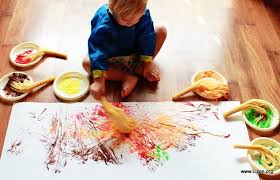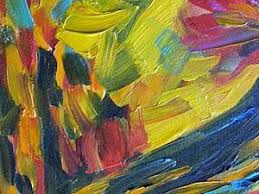oriental styles
LENINGRAD SCHOOL OF PAINTING (part 3)
 And how to explain such a change of state to “left” art, whose representatives continued to occupy key posts in all the organs of this state, which were in charge of art issues in the center and in the localities?
And how to explain such a change of state to “left” art, whose representatives continued to occupy key posts in all the organs of this state, which were in charge of art issues in the center and in the localities?
Among the supporters of the “left” views, the artists D.P. Sternberg, A.D. Drevin, V.E. Tatlin, V.V. Kandinsky, K.S. Malevich, O.V. Rozanova, M.V. Matyushin, stood out N.I. Altman and others. They formed a rather strong group, which initially determined the artistic policy of the Department of Fine Arts created under the People’s Commissariat for Education, as well as the Moscow and Petrograd Soviets. Continue reading
VLADIMIR SCHOOL SCHOOL SCHOOL (part 1)
 Vladimir landscape painting is a trend that firmly established itself in art in the 1970s and is now included in the treasury of genuine achievements of the Russian national school. For the first time, artists of this region made themselves known after the First Republican Exhibition “Soviet Russia” held in Moscow in 1960, when three artists – Kim Britov, Vladimir Yukin and Valery Kokurin – showed their works, the result of creative searches and experiments.
Vladimir landscape painting is a trend that firmly established itself in art in the 1970s and is now included in the treasury of genuine achievements of the Russian national school. For the first time, artists of this region made themselves known after the First Republican Exhibition “Soviet Russia” held in Moscow in 1960, when three artists – Kim Britov, Vladimir Yukin and Valery Kokurin – showed their works, the result of creative searches and experiments.
In his works, K. Britov frantically studied the techniques of textured writing, looking for a special luminiferous color that conveys the mood. V. Yukin sought to express feelings through the state of nature, V. Kokurin was interested in a light-air environment that changes color and shape of objects. Continue reading
VITEBSK ART SCHOOL (part 3)
 The circle of sources covering this time in the biography of the master is mainly identified and studied, therefore all sorts of new information and facts are so rare and valuable. Vitebsk teacher Valentin Karlovich Seilert in the late 1910s visited Pan, and in 1920-1922. studied in Witsvomas with K. Malevich. In his memoirs, he cites an interesting episode dating back to 1919. “Once I once came to Yuri Moiseevich. He had none of his students at that time. I went straight to him in his personal little workshop. I went there, and there they sat on the sofa, Yuri Moiseevich sat, and there was Chagall. Chagall in the corner near the window set his canvas. And then they sat, therefore, and discussed, because Chagall listened to Pan’s opinion, just like a diligent student, with respect to his teacher. But despite this, he, of course, continued his line of behavior. Continue reading
The circle of sources covering this time in the biography of the master is mainly identified and studied, therefore all sorts of new information and facts are so rare and valuable. Vitebsk teacher Valentin Karlovich Seilert in the late 1910s visited Pan, and in 1920-1922. studied in Witsvomas with K. Malevich. In his memoirs, he cites an interesting episode dating back to 1919. “Once I once came to Yuri Moiseevich. He had none of his students at that time. I went straight to him in his personal little workshop. I went there, and there they sat on the sofa, Yuri Moiseevich sat, and there was Chagall. Chagall in the corner near the window set his canvas. And then they sat, therefore, and discussed, because Chagall listened to Pan’s opinion, just like a diligent student, with respect to his teacher. But despite this, he, of course, continued his line of behavior. Continue reading



